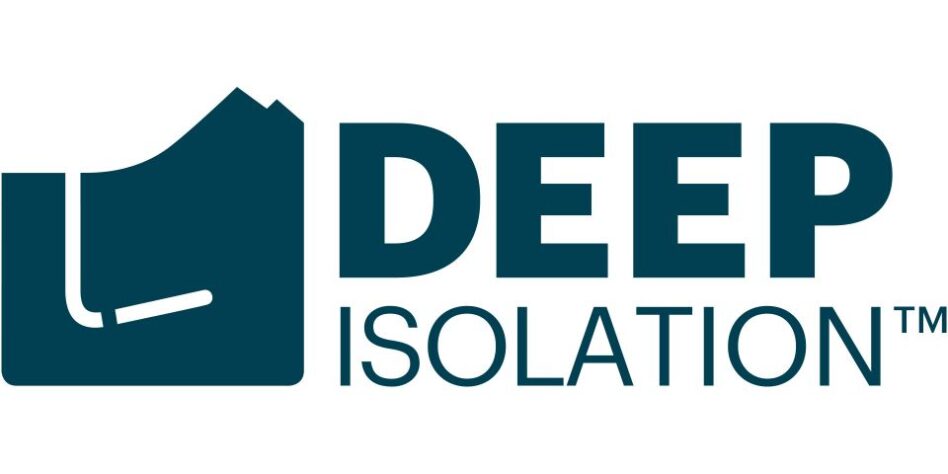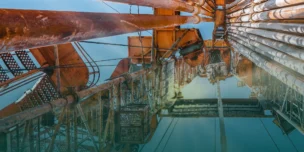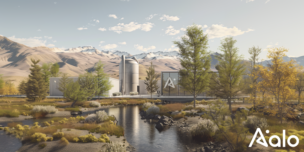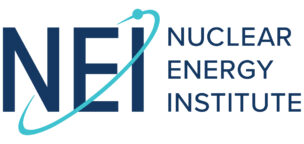As governments the world over consider how to decarbonize their energy infrastructure while still ensuring access to reliable, abundant power, nuclear energy often rises to the top of the list of options. But there are still holdups, and one question comes up time and time again: What can be done about the waste?
Elizabeth Muller, the CEO and cofounder of Deep Isolation, has one solution. Deep Isolation is building borehole disposal systems that utilize directional drilling to bury hazardous waste deep under layers of rock and earth in a less intrusive way than in a mined repository that would require humans underground. The idea: If you can solve the nuclear waste problem, you enable more widespread adoption of nuclear power.
In an interview with Ignition, Muller recounted the twists her career has taken as she’s searched for sensible, viable approaches to mitigating climate change.
This interview has been edited for length and clarity.
Ignition: Your climate change mitigation goals began way before starting Deep Isolation. What were you working on in the years before that idea struck you, and what was the problem that you were hoping to solve?
Muller: I became interested in climate change in the early 2000s. At that time, I was living in France. I was working at the Organization for Economic Cooperation and Development, and it must have been the early days when people were just starting to realize that climate change was potentially a problem. And my father was a physicist, professor of physics at UC Berkeley who had recently done some work on climate. So he was the go-to person that I would ask about any climate questions. He was concerned and skeptical, and this grew into what eventually became Berkeley Earth.
Berkeley Earth did a hands-off reanalysis of all the global temperature records and used pretty close to 100% of the data. It showed that global warming was real and human-caused. And after having done that, I really wanted to focus on what we can do about global warming now that we really believe it’s a problem. What can we do, and what can we do using that same scientific database approach?
A lot of the things that we’re doing aren’t going to move the needle. They’re great to talk about, they feel good, they make you feel like you’re making some sort of contribution, but it’s not actually going to address climate change. And so we were thinking about it from the perspective of, what are the big things if you really want to stop climate change? What are the big things that, if they work, would really move the needle and address the underlying problem?
How do you get from there to what stoked your interest in nuclear energy?
A couple of things along the path are important. One of them was a segue into switching from coal to natural gas. Coal is very bad from a climate perspective. Natural gas is significantly better—you’re still not perfect, still have greenhouse gas emissions, but significantly less than coal. And as a transition fuel, it really was the biggest reason that emissions in the US had declined over that period. And so the thinking was, if we could get big emitters, big coal users like China, to switch from coal to natural gas, and at the same scale the US did, that would buy us more time. That would delay climate change and give us sufficient time that we can then try and get more zero-emission energy sources onto the grid. That project didn’t end up going anywhere. We created a company called Global Shale and I learned a lot about shale gas, and about drilling, and about directional drilling.
But we were also interested in nuclear power this whole time. I mentioned I’d been living in France, where nuclear power is just what is. I grew up in nuclear-free Berkeley, with the nuclear-free zones outside the playgrounds at the schools that I was going to. I was a big fan of nuclear from my dad, and from living in France, but I also understood that most of my friends were anti-nuclear, largely because of the unsolved nuclear waste problem.
Initially, it felt like, as the industry says, this shouldn’t be considered a problem. The waste is so small. We have safe storage for it. Yes, we don’t have disposal, but it’s stored very safely and it’s never killed anyone. But then that moved into, why don’t we just address the problem?
It was really only when we heard about boreholes for nuclear waste disposal, which had been around as a concept since the 1980s. But with our background, our familiarity with shale and directional drilling, that was really the “aha” moment. Yes, we can use directional drilling, we can put the waste into layers of rock where it hasn’t been able to reach the surface for a million years. That’s a very safe place for it to go. And when you use drilling without humans underground, you can go much, much deeper than you can in a mined repository environment.
That gets us into Deep Isolation. I want to take a little bit of a step back and talk more about something that you mentioned, which is what, if anything, is wrong with the way that nuclear waste is contained today?
Nuclear waste is very safe today, so nothing is necessarily wrong with it. The challenge is that it’s not meant to be permanent. It’s meant to be storage for 20 years, 40 years, maybe 60 years, potentially 100 years. But ultimately, it is not in a storage system that is safe for the very long term. We’re leaving the real problem, the disposal problem, to future generations. And so the question is, is that responsible? Is it responsible to generate waste when we don’t have a permanent solution for disposal?
What makes right now the right time to start building permanent disposal technology?
I think it’s linked to climate change. So we need more nuclear power, we really do. We’re going to need a lot more nuclear power if we’re going to address climate change. And people, quite understandably, are saying, “Well, I’m open to the idea of nuclear power if you can solve nuclear waste disposal.” So, great. Let’s solve nuclear waste disposal. Let’s make sure it gets done, not 50 years into the future, but a couple of years into the future, and then we can really lean into the future of nuclear power.
What’s standing in the way of making borehole disposal the default method of disposal and containment for nuclear waste?
There’s the legal barriers, and then there’s the public perception barriers.
The legal barrier is that in the United States, in the 1987 amendment to the Nuclear Waste Policy Act, it was decided that the solution for nuclear waste disposal was going to be Yucca Mountain, and that no other solution was going to be considered until Yucca Mountain was operational. So that is the law, that nothing else can be considered until Yucca Mountain is operational. Now Yucca Mountain has effectively stalled, so there has been no progress on it in quite a long time. So we’ve gotten ourselves into a really difficult bind, where the one project that we are legally allowed to use has been killed, and we are not allowed to do anything else until this dead project has been completed. So that does need to change. We will need a change to the Nuclear Waste Policy Act, which will require Congress to act, and that’s a heavy lift.
There are also perception barriers. A lot of people, particularly in the nuclear waste industry, don’t really understand boreholes. There is still this perception that what goes down a borehole cannot be retrieved, which is false. Anybody who’s worked with the drilling industry knows that it’s very common to put something down a borehole to pull it back up again. You can detach from it, you can reattach. So that’s a false understanding.
Another issue is that many people don’t understand the trade-offs. They think that there’s not enough room at the bottom, and maybe it’ll work for small inventories of waste but not large inventories of waste. Now that is partially true, in that you probably don’t want to put reactor parts down a borehole…But you don’t necessarily need to put the large pieces down a borehole. The value is really in the spent nuclear fuel and certain types of high level waste that don’t currently have a disposal path.
You just signed a customer agreement with Fermi Energia to store and dispose of its waste. What’s the significance of that agreement for Deep Isolation?
Fermi Energia has recognized the importance of figuring out what to do with the waste before the reactor is even built. This is really a significant shift in the way people are thinking about waste disposal. Historically it’s been, “We’re going to build the nuclear plant, and we’ll accumulate a lot of waste, and then sometime in the next 50 years, we’ll figure out what the plan is for waste disposal.” And that’s changing. The Fermi energy example is a great one because they have committed to figuring out waste disposal before they even build the nuclear reactor. That is something that we’re seeing more and more of, particularly in Europe.
Tell me a little bit about the universal canister system you’re working on with Deep Isolation.
The universal canister system is being developed with support and participation of the US Department of Energy under the ARPA-E program. So the key concept here is that this is focused on advanced reactor wastes. Similar to Estonia, looking forward, we want to build a bunch of new types of nuclear reactors. We want those reactors to be smaller, to be modular, to be more cost effective. And that means that their waste is going to potentially look a little bit different. So we’re working on a universal canister system that can be used for various different types of advanced reactor waste, and that could be used both for temporary storage and for eventual disposal of that waste.
What do you think is the biggest misconception about nuclear power?
I still think the biggest misconception around nuclear power is that it’s like nuclear bombs. Right? That if something goes wrong with a nuclear power plant, it can be as if a nuclear bomb is going off. That’s the risk. And historically, of course, nuclear power was developed for nuclear bombs, so it’s understandable that people link the two. But today’s nuclear power is so safe, and really, it’s just not physically possible that it could go off like a bomb. I think that’s a misconception more among the older generations than among the younger generations, but it’s still probably the biggest.
Is there a particular nuclear technology that you think is under hyped or doesn’t get the credit it deserves from industry and investors?
I would go with the bread-and-butter, standard, large-scale nuclear reactors. I’m really excited about the small modular reactors and the advanced reactors. I think those are great. They have incredible potential, but they’re also getting significant attention. I am also hopeful about fusion, but I see it as a ways off and so if anything, I think it’s being overhyped. But these standard, large-scale reactors, particularly the way that they are being built in places like South Korea and the Middle East—really, these can be cost efficient, they can be successful. They just haven’t been in the United States. I think that that should be a fixable problem. We should be able to do large scale nuclear. And yes, that may mean changing some things. But I believe that that is an addressable problem that we should be spending more focus on.
What do you think could be addressed to make building large reactors more cost-efficient in the US?
I think part of it is the difficulty of doing a one-off, and then doing a different one-off the next time, and then doing another one-off again. This is one of the things that the Koreans have been so good at, and the Chinese too, is that you build lots of the same reactor and then when you need care, you’re now implementing a repeatable process.
I also like to talk about the levelized regulations. If you look at the way that the nuclear industry is regulated, and the safety standards, it’s great that it’s so safe, but when the alternative is use of coal or natural gas or other solutions that are not as safe, it feels to me that we should have levelized regulations. The nuclear industry shouldn’t be held to standards that are much, much harder to meet when we have other types of energy with standards that are much, much easier to meet, even though they’re potentially significantly more dangerous.
What are the new businesses, use cases, or products that you see being opened up in the nuclear sector in the next five to 10 years?
There’s a lot that becomes possible with small modular reactors, not just for electricity use, but also for heat for chemical production, replacing natural gas, hydrogen.
The last question that I have for you: What is the best piece of advice that you’ve gotten in your career?
Certainly the most memorable advice that I got was when we first started thinking about nuclear waste disposal. We went to a longtime friend who’s been in the nuclear waste disposal industry for, I don’t know, 30 years, 40 years, something like that—a very long time—and his advice was, “Whatever you do, don’t go into nuclear waste disposal. It’s a terrible industry. Nothing ever happens. You will spend the rest of your career in nuclear waste disposal and nothing will ever get done.” The reason I’m sort of putting that as good advice is because I think it had the opposite effect of what he was going for. We thought that shouldn’t be true. It shouldn’t be that this is an industry where over 40-year careers nothing ever happens.
In terms of more real advice, I guess just never stop learning. I think as a CEO, particularly for an industry that isn’t settled, you need to know new things every year that you didn’t need to know last year. You can never sit still and assume that you know what you need to know for the next set of challenges. You have to recognize that you don’t know what you need to know, but that you can learn enough, and you can do that through advisors, through mentors, through people who know way more than you do. And also through reading.
Lead Reporter of Ignition





